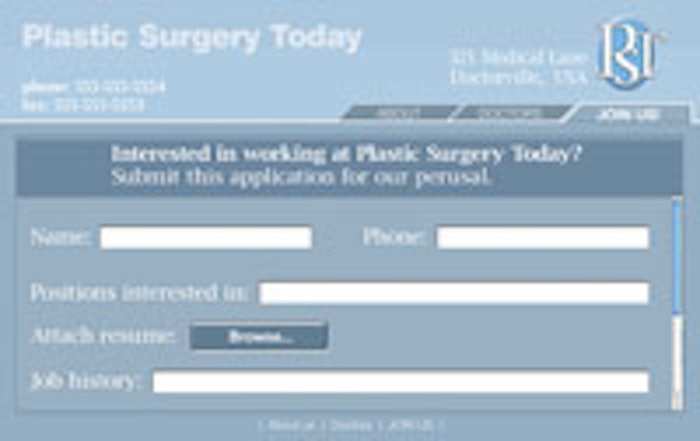
Abstract: Creating a successful business can depend almost entirely on the people who support that business day in and day out—its employees. This is why it is vital to know what to look for when hiring someone to fill an open position. By developing a set of hiring practices and expectations for the initiation of a new employee, not only will you be able to efficiently fill out your staff, but you will also be able to easily determine who is the best person for the job.
People and leadership issues are the No. 1 time-consuming focus of every business owner. And any person who owns or leads a business knows the facility is only as good as the people who are working within it. Business owners hiring out of desperation—as opposed to inspiration—will have serious challenges.
When you are trying to fill a position simply by putting in someone as quickly as possible, it seldom works out. It is better to hold off in the hiring process to find the right person. And even if you have made this mistake in the past, there is always the opportunity to turn the situation around.
To ensure you are hiring the best team members for your patients, as well as the health of your business, it is essential that you clearly define the characteristics and attributes an employee must possess before becoming a part of your organization.
Essential traits
There are 15 specific traits you need to look for in a ideal team member, and these traits should be non-negotiable. The three main criteria to look out for when hiring new staff members are knowledge, skills and attitude, and the resulting 15 traits should all fall under these headings. See The 15 Must-have Traits to note what you need to look for in a new staffer.
However, remember, you can train people in the knowledge and skills arena, so it is most vital that the new team member has come in with the right attitude, which is untrainable. These characteristics build the framework of the candidate and are used to build the basis of integral interview questions and processes. Start with these qualities, and expand on them as the position and business requires.
Recruitment
When working around the issue of recruitment, the more innovative, consistent and aggressive you can be, the more likely you are going to find the right kind of team members to work with. Hiring is a 24–7 process, and all businesses should be continually accepting applications and even bringing people in for interviews, even if there are not positions currently available. This helps keep employers open to the best potential employees, despite any adverse timing issues.
To encourage continual interest for applicants, have a “Join Our Team” tab on your Web site where people can fill out an online application. Things can change rapidly and you never know when the need for a new team member will arise, so always keeping as many options as possible available to you is a smart move.
Hiring resources
Finding the right people to even interview can take immense amounts of time, so using some tried-and-true screening methods can be incredibly helpful in your search. Options such as classified screening and Internet marketing can save you countless hours across the desk from an interviewee who clearly isn’t a right fit for your business.
Classified screening. When advertising an available position via a classified ad, the ad should be as specific as possible to eliminate individuals who are not appropriate for the job. The ad also should provide enough information and details about the position, its compensation structure, benefits and other noteworthy aspects, such as the opportunity to work with a well-respected surgeon, to entice the right types of candidates.
Have classified respondents call into a voicemail system and leave a message. This is their first impression on you, and you can use it as a method to weed out applicants. Another option is to have people fax or e-mail in their résumés so you can review their work histories and discern if there is a match between the business culture and mission your practice provides and the person applying for the position.
Internet marketing. Think of resources such as Monster.com and Craigslist as tools at your disposal when hunting for a new staff member. Reviewing applicants that have submitted résumés and job interests into these sites can save you much time and hassle, as they can narrow down likely candidates to those that would truly fit the bill for your open position.
Also, the Internet can be quite affordable and have a broader reach to attract your potential new team member. With this larger reach, you have the ability to connect with an ideal team member who may happen to currently live in another section of the country. You can also use Internet resources such as Facebook and MySpace to peruse how potential candidates represent themselves in the online community at large.
The interview process
The interview process should be formatted to make it as time-efficient as possible, so it is important to have clarity in what the essential interview steps are.
The logical first step for the process would be a pre-screen phone call. Spending five minutes on the phone with each potential candidate, asking a few questions vital to the position you are interviewing for, will help determine each candidate’s viability. If the person doesn’t seem like she is an appropriate fit, thank her for her time and move on to your next candidate.
If the candidate does seem like someone that might fill your open position nicely, invite her in for a brief, in-person interview. For this interview, impressions are imporant. Look for a well-groomed and fashionable image that fits with your practice’s culture. It is the burden of the candidate to impress the owner with her image, so take note if she appears to have put her best foot forward in regard to her appearance.
Also, notice non-verbal communication cues, such as good eye contact and open body language. Non-verbal cues make up 60% of communication and can say more that verbal cues. People that seem open and friendly are more likely to be adaptable, while those that seem closed off and defensive may raise a red flag.
Additionally, watch the person’s tone and outlook. Is she coming across as someone who is positive or negative? How was her working relationship with her last employer? Signals in demeanor and attitude during this interview are important, as they can portend the relationships and attitudes a candidate will possibly create if she is hired for the position.
If the candidate is not a fit, thank her for her time and move along, but if it seems like there is a future for her at your practice, continue the process by calling at least three of her professional references to find out about her experience, background and professional attitude in the workplace.
Next, bring the still-remaining candidates back in for a second interview. This time, choose an outside location, such as a coffee shop or restaurant. Look for consistency in her communication skills and the image she presents. Also, get down to brass tacks with your interview questions at this point. See Characteristic Questions to review list of interview questions that are based on candidates’ strengths and weaknesses. Make sure to focus on any potential issues you could see arising, as it would be better to find this out now, as opposed to after you hire a candidate. Discuss compensation, and, if appropriate, set up a technical interview. The candidate should give clear and direct responses to all your questions, helping you to make the best decision for your practice when hiring a new team member.
Upon completion of the second—or third, if necessary to qualify her skills—interview and once you have made your decision on the candidate that will best suit your business, your patients and the open position, set time aside with the new team member to review and sign the employee manual and her job description appropriate to her new position.
Setting clear expectations
Team members need to have clear job descriptions before their first day of working in the medical spa or practice. The job description should detail the duties required and what level of performance is expected. It is also important when working with staff to have conversations around expectations. People thrive when they have a structure to follow, and the employee manual and job descriptions clearly state what is expected of them and what they can expect from the business in return.
The most important motto a business owner or manager can adopt when looking for people to fill positions is to “hire hard and manage easy.” The time, effort and financial commitment it takes in hiring people who are not the right fit for the culture is too costly, but the benefits of putting in the work up front to find the right person the first time around can be numerous.










